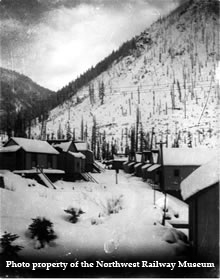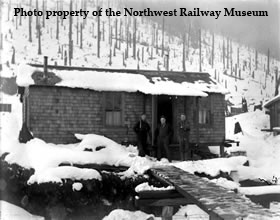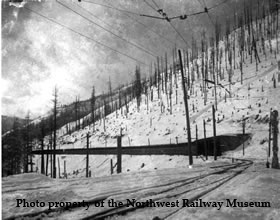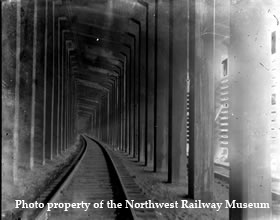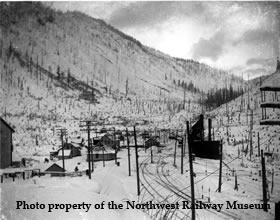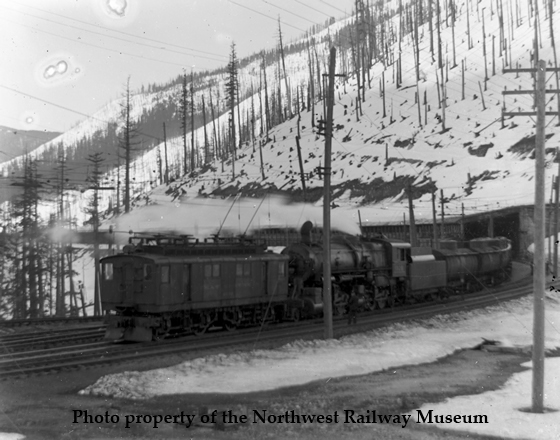
|

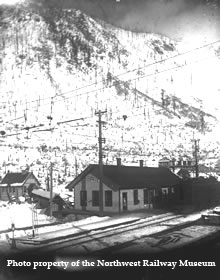
Two views of the Wellington depot. The second photo was taken from a height, perhaps from the top of a boxcar. Depot was moved to this location in summer 1910 and the school house can be seen behind it. Original location was near the Bailets hotel just east of where the concrete snow shed was constructed..
The depot and town were renamed Tye by the railroad on October 15, 1910, but the post office and other government agencies contiued to identify the community as Wellington. The depot was the center of town life, especially in a railroad company town. Through here, all communications with the outside world arrived or were initiated. Mail arrived and departed. And so did workers and their families.

